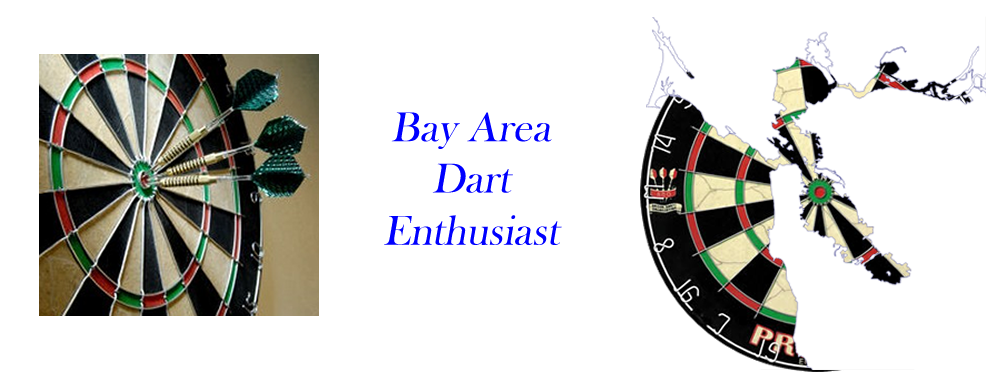There are physiokinetic aspects that must be achieve to perform well in the dart arts. This goes without saying that the mind is paramount to achieving those aspects. The two are mutually beneficial and connected much like the symbolism of the Chinese Yin-Yang.
Motion must be natural, smooth, relaxed skillful. This can be achieve only with proper practice of intention. If you step up to the oche line and just toss out the darts you are not going to achieve your objective of dart-mastery. You must have an intention such as my recent article on, “Making the Rounds.”
You have to, “FEEL things” in a positive relaxed state of body and mind to throw well. You have to feel that state of relaxation through the entire process from taking to the oche line until you release the dart to seek out its intended target.
You must breath for breathing reduces and combats the effects of the adrenal chemical dump. This dump causes things like loss of fine motor skills. When it comes to a relaxed throw from the hand the motions involved meet the criteria of find motor skills. They tend to disappear ruining a dart throw so breathing before, during and especially after each throw goes a long way to keeping your skills sharp.
Another ill effect to your darts is the adrenal effect of a loss of peripheral vision. It is this vision that keeps your body through out the throw connected with and conscious on a unconscious instinctive like way of where your arm is, your body, and your hand and dart while throwing and releasing. Losing even a small part of that ability hinders good solid consistent darts.
Yet another visual effect of this dump is tunnel vision and that goes with peripheral vision for one is lost completely in the tunnel and you miss out on how you throw to detect and correct errors.
Lets talk about distorted perceptions, depth perception alteration and behavioral looping. When the dump hits what you perceive tends to fall short of reality so breathing properly as described combats this and as to depth perceptions that changes the way you throw because your target may not be exactly where you aim to hit. Here again, breathing.
Behavioral looping is that action you take where your mind says to you, I threw this way last time and hit my target so when you miss this time you stubbornly assume that if you throw again and again it will find its way but in truth you may have to change targets.
It’s like I try for the triple twenty and for what ever reason miss by a mile then it might be best to simply change targeting, say to the triple 19 where more often than not I hit my target/mark.
All of these things hinder good darts and breathing, focus, concentration and lots of practice help you to keep the resulting stress and strain from causing muscle to tense up and do strange and bizarre things.
You have to feel an almost total lack of any muscular strain, even a little except what is required to move and toss the dart. You have to feel it through the entire process to achieve proficiency in the dart arts throw.
Might be the example of the bull whip and the ability to crack the whip would convey the need for an effortless effort. Visualize the limpness of the bull whip and then how best to make that whip crack so loud it startles those around you, even you. It is like being surprised each and every time because the whip moves effortless and relies on the hand and arm to make it work. Think of your body holding is complete stillness with not a bit of stress, it simply is in a state of relaxed stillness then think of the arm are the hand holding the whip and the movement of the arm, wrist, hand and fingers as the body of the whip while the dart leaving your hand the tip of the whip snapping out there to crack the air. That dart will not hit the target if the hand and fingers stiffen or don’t relax enough to fully freely move as the limp whip to toss the dart properly to the target.
Effortless effort first starts in the mind for any distractions of the mind from outside or inside can cause ripples in the pond that should be as still as glass making it a mirror. Breathing along with relaxation techniques much like those used in meditation relieve the tension and result in stillness without tensions.
One cannot achieve a still in the present moment mind with any stress, tension or tightening of the mind for the mind effects the body as the body effects the mind. To be effortless one must feel the body for any tensions or stresses then breathe and mindfully relax the muscles to be like the whip.
Breathing and then focusing on the facial muscles, the neck muscles and then the shoulder and upper chest muscles are key. If you feel any tension or stress on those areas breathing and mindfully relaxing those areas will effect the rest of the body thus in the process relax the mind.
A positively present moment relaxed meditative mind leads the body to the same state as does a positively relaxed meditative body leads the mind to the same state in return, a mutual beneficial mind-body connection. To be effortless in your efforts is to be relaxed positively and that gives you the benefit of minimal energy consumption and maximum energy conservation so one can participate in the dart arts in a relaxed positive state of body-mind/mind-body.












